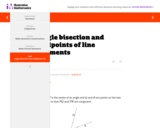
This task provides a construction of the angle bisector of an angle by reducing it to the bisection of an angle to finding the midpoint of a line segment.
- Provider:
- Illustrative Mathematics
- Date Added:
- 06/22/2022

This task provides a construction of the angle bisector of an angle by reducing it to the bisection of an angle to finding the midpoint of a line segment.

Find out how angles and symmetry come into play in the game of pool in this video adapted from Annenberg Learner’s Learning Math: Measurement.

This video segment from NOVA: "Animal Imposters" shows the lightning-fast strike of the anglerfish.

This lesson plan was created to introduce Angles and Equations for 7th-grade math.
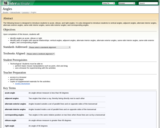
Students are introduced to all kinds of angles in this lesson plan, including acute, obtuse, right, vertical, adjacent, and corresponding among others.
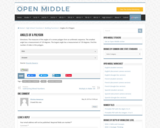
Open Middle provides math problems that have a closed beginning, a closed end, and an open middle. This means that there are multiple ways to approach and ultimately solve the problems. Open middle problems generally require a higher Depth of Knowledge than most problems that assess procedural and conceptual understanding.

This lesson is about animal adaptations. Students will learn about adaptaions of different animals through discussion and group work. Utlimately, students will be able to write a paragraph descrbing the adaptations of an animal of their choice. Image Created by: Stephanie WoodPhoto Taken by: Stephanie Wood

Learn about different animal adaptations while playing theater games.

3.2.4 Students will compare the structures and functions of different species that help them live and survive such as hooves on prairie animals or webbed feet in aquatic animals.3.2.2 Students will differentiate between inherited traits of plants and animals such as spines on a cactus or shape of a beak and learned behaviors such as an animal learning tricks or a child riding a bicycle.Created by: Shellet Rowley. Picture taken by: Shellet Rowley

This lesson plan is designed to help 3rd grade teachers teach their students how animal charateristics help them survive ina habitat The activities in the lesson can be completed in 1- 3 hours. This lesson is taught as a whole group ,in small groups in person or online. The slide presentation will be completed as a partner assignment. The lesson plan is created by the author (Norlene Hamann) using resources from Youtube, Worldbook kids, and National Geographic Kids.

This is a science unit plan for 1st grade about different biomes/habitats and what the characteristics and adaptations are of the animals that live there. It is a technology based unit using resources like Nearpod, Adobe Spark, LMS, etc.Title Image: MathKnight -at- TAU, Nov. 11, 2015, Animals of Israel, CC-BY-SA-3.0
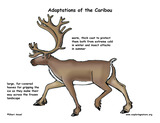
This lesson is about animal adaptations of animals that are found in Utah.
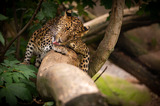
Second Grade ScienceStrand 2.2: LIVING THINGS AND THEIR HABITATSLiving things (plants and animals, including humans) need water, air, and resources from the land to survive and live in habitats that provide these necessities. The physical characteristics of plants and animals reflect the habitat in which they live. Animals also have modified behaviors that help them survive, grow, and meet their needs. Humans sometimes mimic plant and animal adaptations to survive in their environment.Standard 2.2.1Obtain, evaluate, and communicate information about patterns of living things (plants and animals, including humans) in different habitats. Emphasize the diversity of living things in land and water habitats. Examples of patterns in habitats could include descriptions of temperature or precipitation and the types of plants and animals found in land habitats. (LS2.C, LS4.C, LS4.D)Students will be able to observe and discuss animal adaptations. They will demostrate their understanding by coming up with adaptations the animal would need to survive in a different type of habitat. <a href='https://www.freepik.com/photos/snow-leopard'>Snow leopard photo created by vladimircech - www.freepik.com</a>

This lesson is an art integration lesson based on the following standards: Standard 3.2.5Engage in argument from evidence that in a particular habitat (system) some organisms can survive well, some survive less well, and some cannot survive at all. Emphasize that organisms and habitats form systems in which the parts depend upon each other. Examples of evidence could include needs and characteristics of the organisms and habitats involved such as cacti growing in dry, sandy soil but not surviving in wet, saturated soil. (LS4.C) Standard 3.V.CR.1:Elaborate on an imaginative idea and apply knowledge of available resources, tools, and technologies to investigate personal ideas through the art-making process.
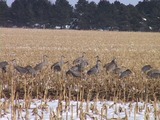
Seasonal behaviors are actions animals take that respond to or coincide with seasonal changes. Seasonal changes often trigger an impulse in animals to hibernate or migrate.
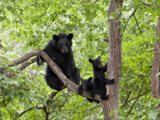
This lesson plan is designed to help lower grade teachers teach their students to compare different animals. The activity in the lesson can be completed in 30-40 minutes in small groups as part of a whole group lesson in person or online. The lesson plan is created by the author using resources from Youtube, and World Book."American black bear with cubs" World Book Kids, World Book, 2022. Online image,www.worldbookonline.com/kids/media?id=pc372410. Accessed 25 Jun. 2022.

It takes a thick skin to withstand the hardships that life has to offer. This collection of images shows a variety of animals, each with a slightly different type of protective covering.
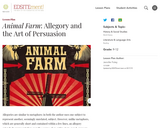
Allegories are similar to metaphors: in both the author uses one subject to represent another, seemingly unrelated, subject. However, unlike metaphors, which are generally short and contained within a few lines, an allegory extends its representation over the course of an entire story, novel, or poem. This lesson plan will introduce students to the concept of allegory by using George Orwell’s widely read novella, Animal Farm, which is available on Project Gutenberg.

This lesson plan is for 2nd grade science. Students take or use a photo of an animal and edit it using Adobe or a similar program to add labels of animal features. Students will conduct research about the animal and use notes to create the labels and present their photo to the class and explain the functions of the labeled features to the class.
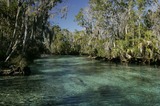
Second-grade lesson on the types of habitats and needs of living things. Students will create a poster that shows what they learned about a specific habitat. Student goals/intended outcomes: Students will be able to identify the different habitats and at least 3 animals that live in each habitat. Students will be able to identify and list the four needs of animals. (food, water, shelter, air)https://pixnio.com/fauna-animals/manatee-pictures/tropical-habitat-natural-environment-for-manatee-mammals